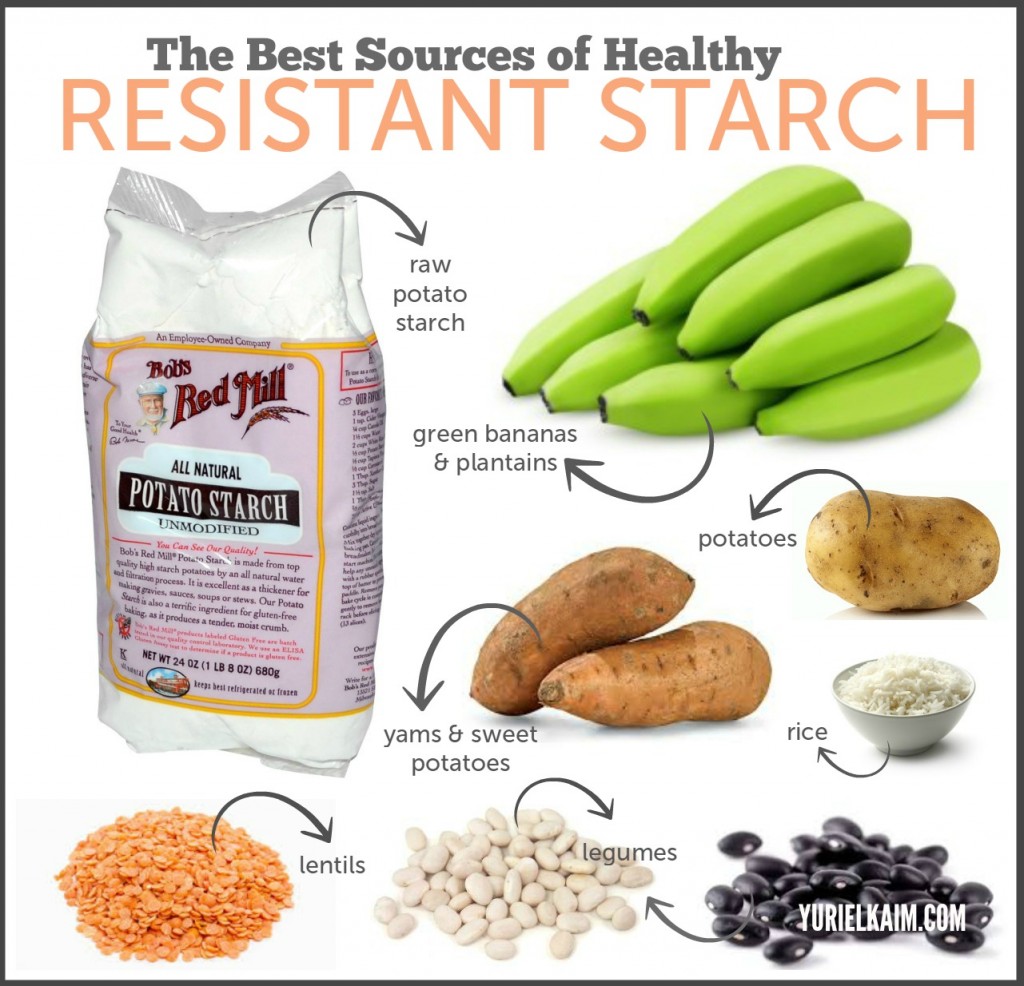If you have been following my blog, television and radio segments you would know that I am not a big fan of starchy foods. Especially rice, pasta, bread, potato and processed/boxed foods. These foods have contributed to our increases in obesity, diabetes, cancer, heart disease, stroke and so much more. In my opinion, starchy foods and sugar should be considered a public health hazard. So why then do I write an article on starches saying they can save your life? It’s simple actually because just like starches are one form of carbs, starches also have different classifications.
Before I get into how to add more resistant starches to your diet, let’s take a closer look at starches in general. Let’s face it, starchy foods are hard to resist. They taste great, don’t cost much and are easy to prepare. This trio of benefits though will most likely lead you to a health disaster. There is often confusion over what starches are and whether or not they are good for you or not. In fact, a recent survey showed that the majority of Americans are confused about what Carbs and or starches are. Starches are just one of the many types of carbohydrates (carbs) we consume. (For more info on carbs, check out my previous blog “Carbs 101”) Most of the starches we consume are easily broken down after consuming them by the enzyme amylase. Amylase converts starches into sugar, which is then absorbed into the bloodstream and used for energy or converted into fat. Due to our overconsumption of starches over the past 40 years, we have turned our bodies into fat-factories. Keep in mind that most of the carbs we consume are starches.
Starches are long chains of glucose that are found in grains, potatoes and various foods. Most of the starch we eat gets digested and sometimes a small part of it passes through the digestive tract unchanged. In other words, it is resistant to digestion. This type of starch is called resistant starch, which functions kind of like soluble fiber. This resistant starch has shown to have many incredible health benefits such as: improved insulin sensitivity, lower blood sugar levels, reduced appetite, improve hydration, improve immunity and various benefits for digestion.
I mentioned that earlier “most of the starches” we consume are easily broken down into sugar. There are other starches known as “Resistant Starches (RS) also found in our diets. Resistant starches are also broken down into types. The following are the 4-types of RS and where they come from:
- Type 1 is found in grains, seeds and legumes and resists digestion because it is bound within the fibrous cell walls.
- Type 2 is found in some starchy foods, including raw potatoes and green (unripe) bananas.
- Type 3 is formed when certain starchy foods, including potatoes and rice, are cooked and then cooled. The cooling turns some of the digestible starches into resistant starches via a process called retrogradation (the process in which amylose and amylopectin chains (what cooked starches break down into that make starches unhealthy) “reconnect” into something that is not easily digested).
Of all of the benefits of resistant starches, I believe the one that is most important these days is the impact they can have on weight loss and blood sugar. We are in an Obesity and Diabetic epidemic right now and the numbers keep getting worse (38% of Americans are Obese and 60+ million with some form of blood sugar problem). We need to focus our attention to eating more resistant starches such as whole grains, seeds, beans, raw bananas, (not raw potatoes like mentioned above) and eat our starchy cooked foods (potatoes, rice, pasta, pizza, etc.) cold!
All of these seem reasonable except for the cold rice, pasta, pizza and potatoes. For those who still insist on eating these types of foods warm, I would suggest using the natural and scientifically researched ingredient from white kidney beans—Phase 2. I have mentioned Phase 2 in several blog posts with regards to its impact on weight loss, cravings, blood sugar and cholesterol, and now I am suggesting it as a way to get starches to pass through your stomach similar to those of resistant starches. Phase 2 has clinically shown to block up to 65% of the starches in your diet from breaking down…sort of like the way a resistant starch behaves. By doing this we will have a similar impact on health to that of consuming foods that are resistant starches.
Regardless of how you do it; either adding more resistant starches or making the starches resistant is an important step to take when planning your daily meals.


